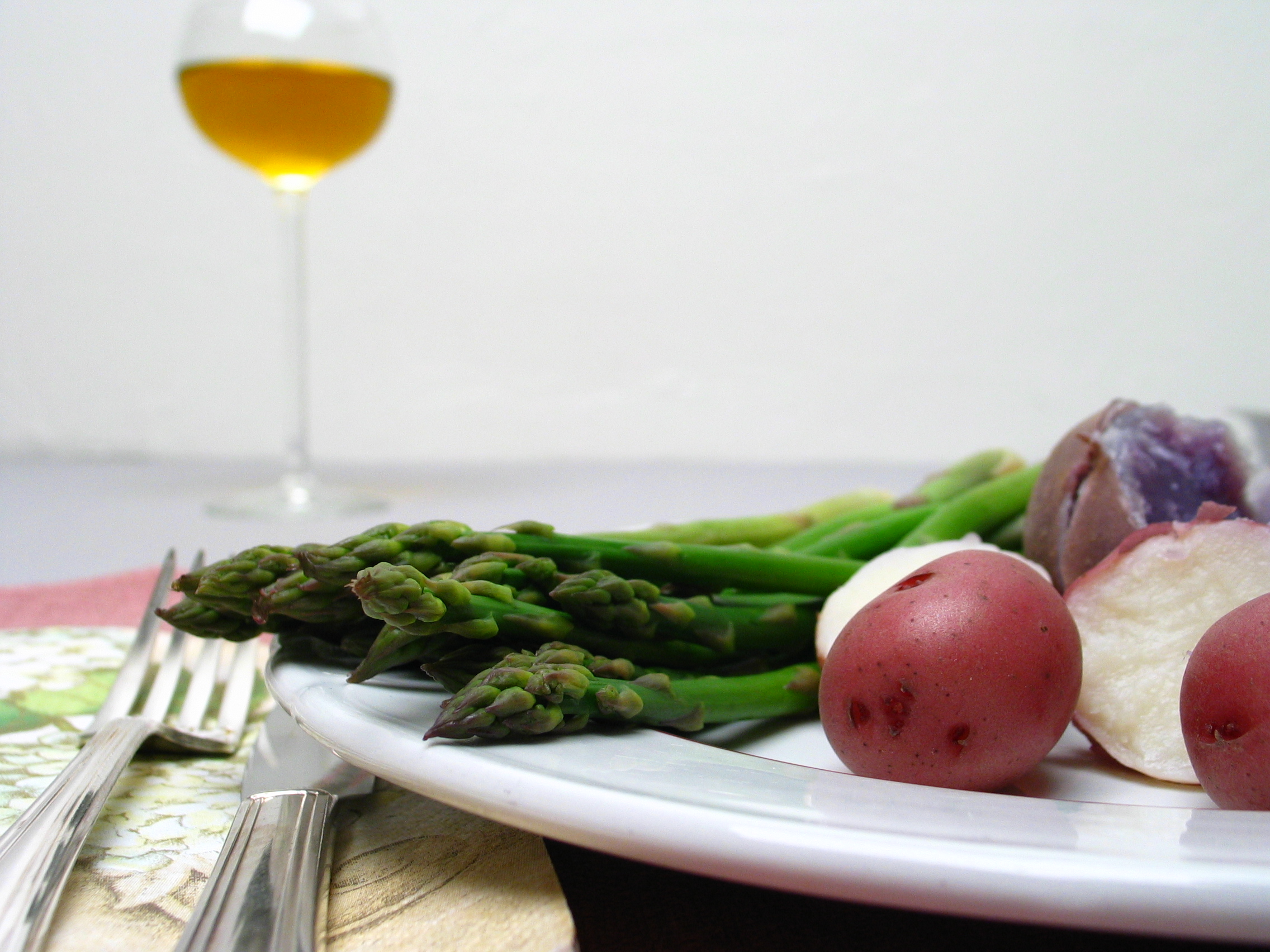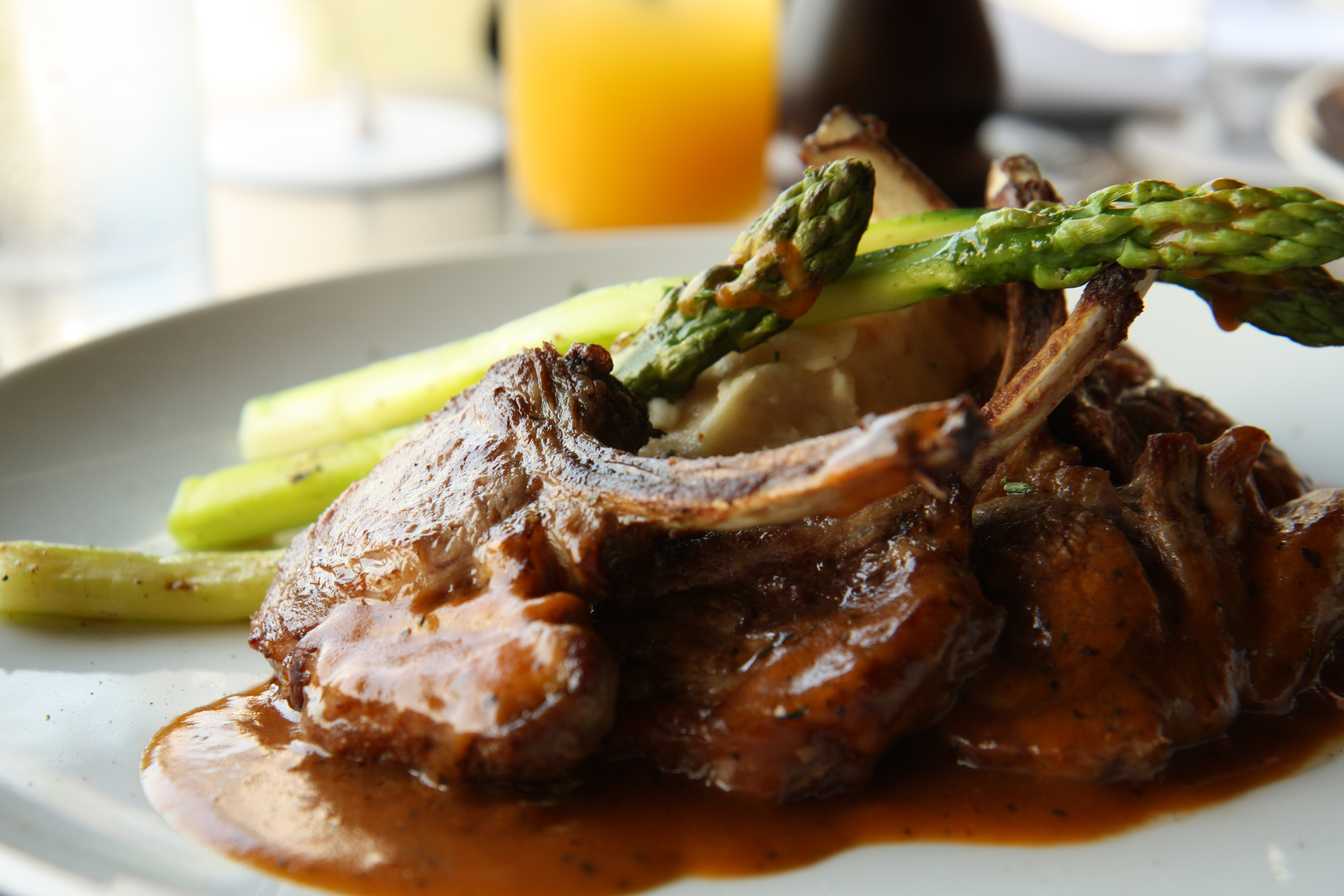Cultivated since ancient times, asparagus is a harbinger of spring virtually worldwide. Whether stir-fried in China, bathed in Hollandaise sauce in Germany or the Netherlands, or grilled over a wood fire on the California coast, asparagus is not only delicious, it is loaded with nutrients, antioxidants, and fiber.

The appearance of the first tender spears of asparagus are cause for celebration with festivals ranging from California and Michigan to the British Isles and continental Europe, particularly Germany, Austria, and the Netherlands. In Great Britain, April 23 is Asparagus Day and kicks off the season of enjoying asparagus through June 21.
Soon after the winter chills subsides, tender shoots of asparagus make their first appearance. If uncut, the individual spears get thicker as they grow. If left unharvested, the spears will flower and ultimately transform into an ethereal, lace-like fern. Being a perennial plant, the asparagus is cut when picked, rather than being pulled up by its roots.
Cultivation
Growing asparagus is a lengthy process at the start. Germinating from seed takes patience and determination. The plants are delicate, difficult to grow, and need a period of time to adjust once they are transplanted outdoors. Most commonly, home growers plant year-old asparagus “crowns,” entire root systems that will produce up to one-half pound of asparagus once they are fully acclimated. And, even though the crowns produce asparagus spears soon after planting, it is best not to harvest any stalks until the next spring after the transplant.
White asparagus is cultivated by mounding up soil around the stalks as they grow to prevent asparagus from developing a green exterior by virtue of photosynthesis. The flavor is somewhat more subtle, in part, because the stalks’ full length is peeled to just below the tip.

Choosing the Right Stalk
When shopping for asparagus, choose spears that are relatively thin, from the diameter of a #2 pencil up to that of the barrel of a Mont Blanc fountain pen. Thicker stalks develop a tough exterior and a pithy interior. Larger stalks should have the lowest 2 to 3 inches peeled to get rid of the woody skin.
No need to worry about where to trim a spear of asparagus. Observe and the stalk itself will show you the way.
To trim an asparagus stalk, hold it between your thumb and index fingers at the bottom and just below the tip. Now, bend the bottom until it snaps off from the rest of the spear.

Preparation Methods
An asparagus pot is ideal for steaming asparagus. The tall, narrow profile of the pot allows the stalks to be steamed standing up, so only the very bottoms are in the steaming liquid.
Asparagus is easily grilled and takes on a wonderful flavor when cooked over wood or charcoal. In a bowl, toss the stalks with olive oil, salt, and pepper. Over direct heat, lay the asparagus spears perpendicular to the grill grate or use a grill basket or a grill wok. Grill for 4 to 6 minutes, depending on the spear’s diameter.
To roast asparagus in your oven, toss with olive oil, sliced or minced garlic, salt, and pepper, and then place in a roasting pan or on a cookie sheet in a single layer. Place in a pre-heated 450oF oven and roast until just tender, turning once or twice after a few minutes. Depending on the spear’s diameter, allow 10 to 15 minutes for cooking.

Plain or Fancy
When tender spears of asparagus are ready to cook, their flavor is so abundant they really need very little accent. A squeeze of lemon, dollop of butter, or a pinch of salt is really all that’s needed.
However, take all of the above and add an egg yolk or two and you have the classic accompaniment: Hollandaise Sauce. Here’s the Lobel family’s version of the recipe.
Hollandaise is an emulsion developed in The Netherlands in the 16th century and transported to France a short time later. Earliest version varied somewhat in their ingredients, particularly when it came to the inclusion of egg yolks. The marriage of butter, egg yolks, and lemon juice together came about in the 19th century as a sauce for fish.
Basic Hollandaise is a foundation for experimenting with new flavors ranging from tarragon and tomato to pesto and chipotle.
A leading variation on a classic Eggs Benedict is Oscar Benedict that pairs Hollandaise, asparagus, and an English Muffin with lump crabmeat.
What’s your favorite way to prepare asparagus? What’s your favorite asparagus recipe? Do you prefer green or white? Do you look forward to asparagus season as winter draws to an end?



Leave Your Response